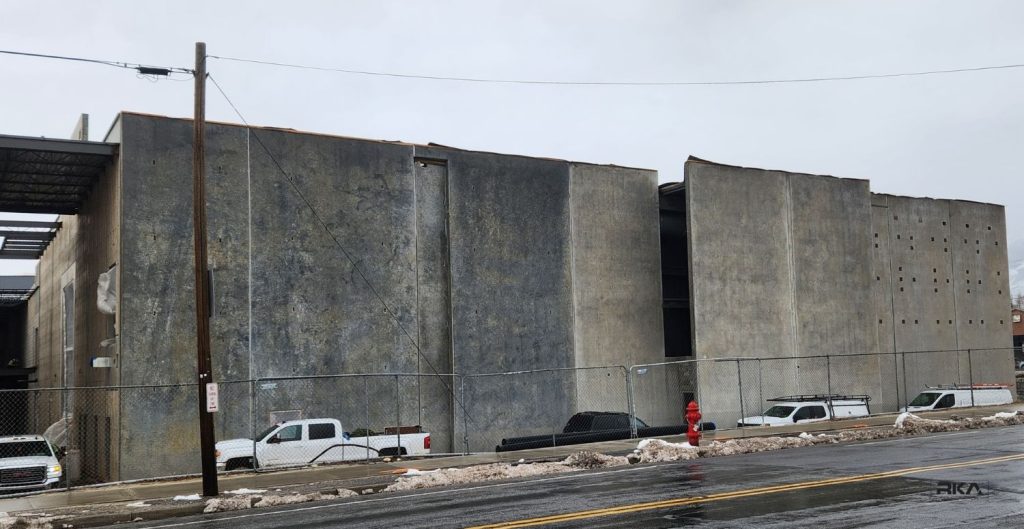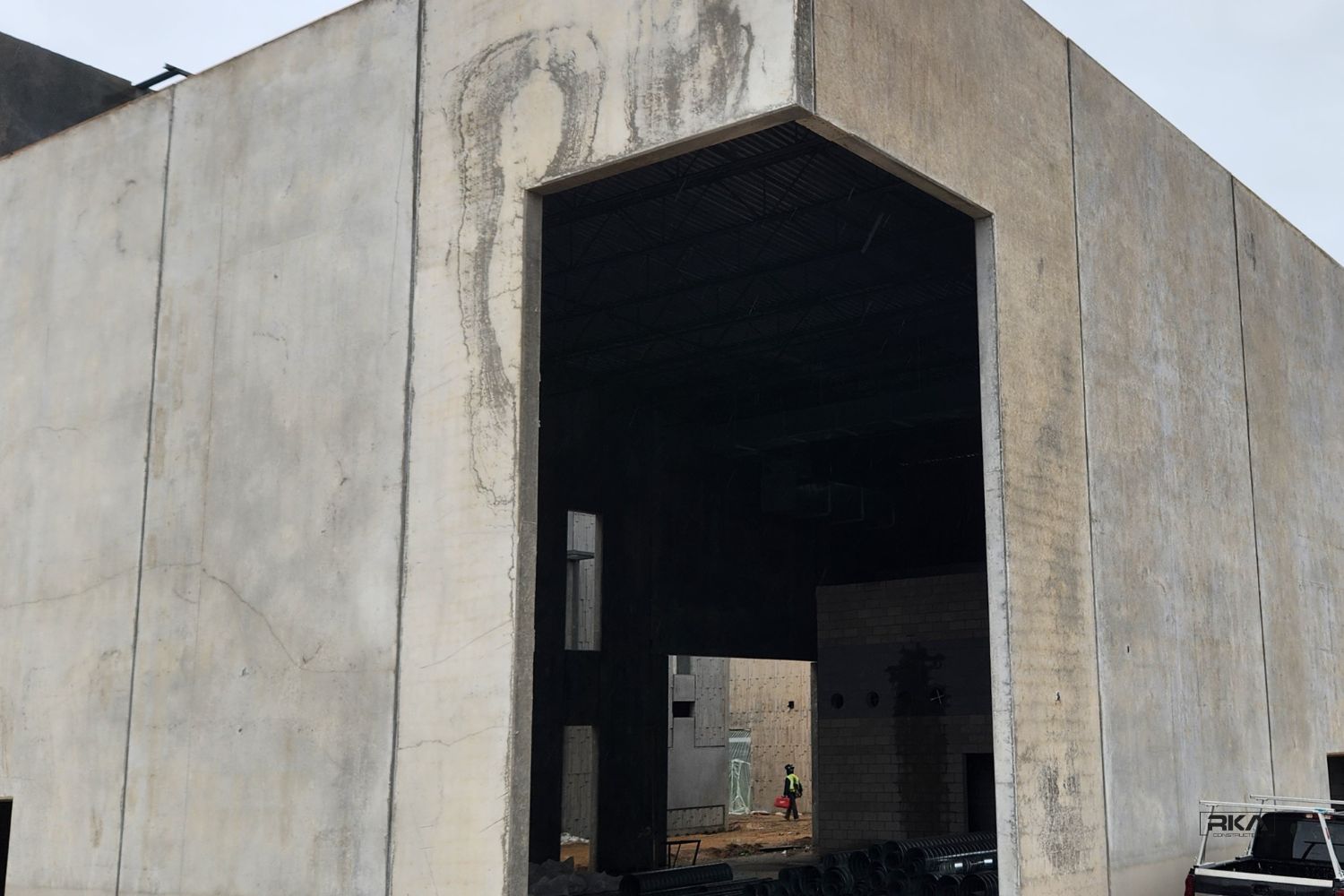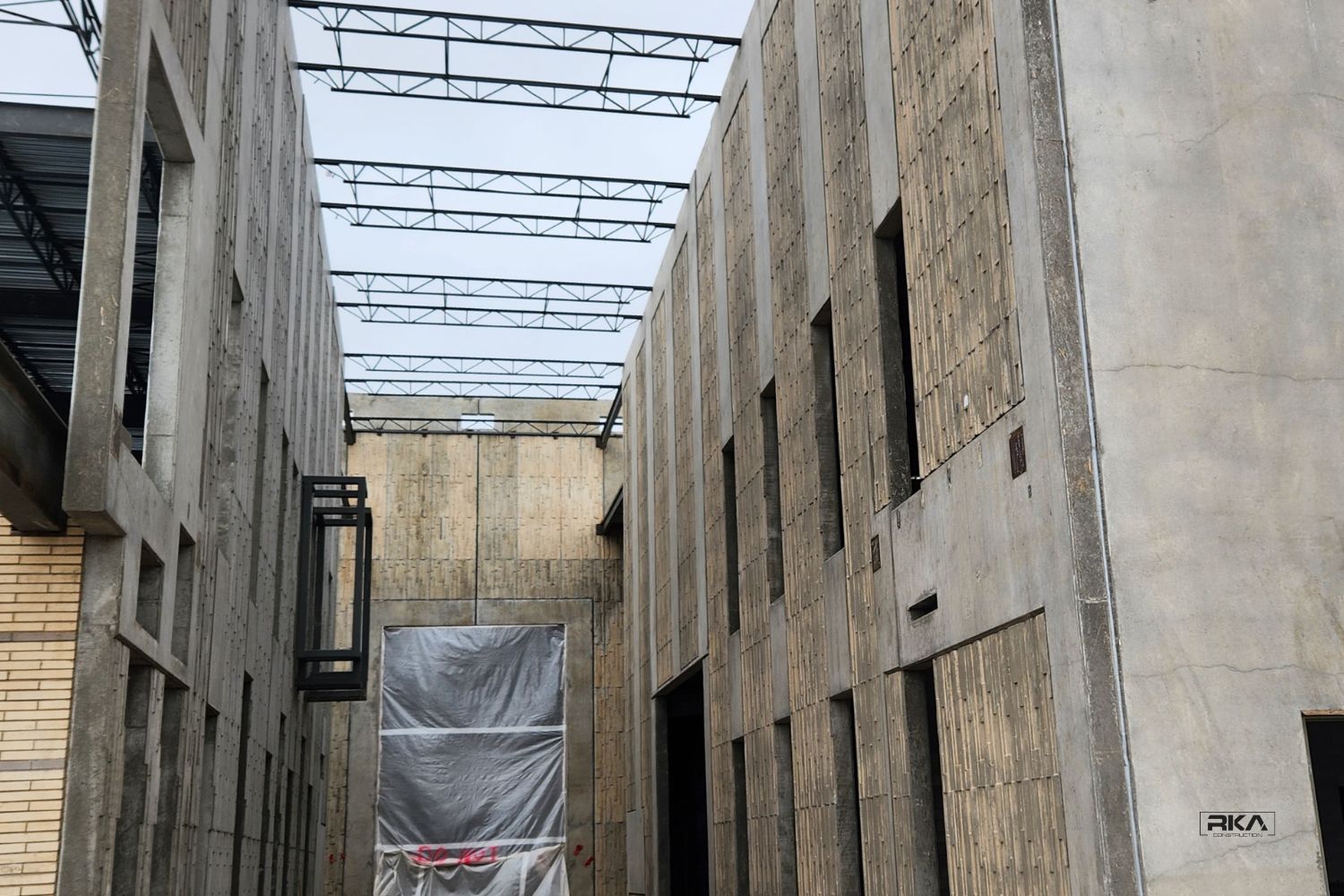Long-established and still regarded as one of the best construction techniques for commercial structures is tilt-up concrete wall construction. More than 650 million tilt-up concrete buildings go up every year making concrete tilt-up construction an popular technique for creating buildings of various sizes, functions, and design features. Using tilt-up construction, RKA Construction has successfully finished a variety of buildings for clients, including warehouses, offices, and facilities.
Process of Tilt-Up Concrete Wall Construction
These buildings are constructed on-site, where the concrete walls are cast either on the floor slab or on a separate casting bed. This method allows for flexibility and quick construction in a manner similar to a factory production line. Once the concrete is strong enough, the slabs are hoisted by a crane and are placed on foundation footings to serve as the building's external structure. The exterior of these panels can be covered with various types of siding, cladding, or veneer, and the interior can be insulated or finished to meet the specific requirements of the facility.

Tilt-Up Concrete Walls and their Advantages
Tilt-up walls provide general advantages over most conventional construction techniques.
These advantages include:
- They are more economical. Tilt-up concrete walls require less staff and equipment. Even though using a crane is expensive, this approach is generally far more cost-effective, especially for commercial establishments.
- They are quicker and safer, although the casting process for the panels takes some time, the entire installation time for tilt-up walls is among the quickest. Crews can continue working while panels are being cast while carrying out other tasks on the jobsite. When several contractors are engaged on a project, this improves worker safety and decreases jobsite congestion.
- Less waste and minimized enviornmental impact. Using this method there is on the environment because there is significantly less garbage generated to dispose of making the worksite safer and the environmental impact minimized. When a structure is demolished, tilt-up walls can also be recycled, causing even less environmental harm.
- Customization and individualized architectural design is more possible to create with tilt-up concrete walls. Tilt-up walls don't have to leave the usual building looking like bare concrete after construction. In reality, tilt-up walls can have various textures and surface effects applied to them during the casting process to create a more aesthetically pleasing appearance.
History of Tilt-up Concrete Walls
Tilt-Ups can be found in a 1903 Thomas Edison quote stating, “Tilt-Up construction eliminates the costly, cumbersome practice of erecting two wooden walls to get one concrete wall."
Tilt-up construction is a method of building where concrete walls are cast on site and then tilted into a vertical position. The inventor of tilt-up construction, Robert H. Aiken, created the first concrete tilt-up walls for Camp Logan in the early 1900s. In 1909, his company, the Cement Home Company, demonstrated their method of construction by building a tilt-up concrete home in the Chicago Coliseum. Initially, tilt tables were used for erection, but as mobile cranes and truck mixers advanced, tilt-up building became more popular. Since the 1940s, tilt-up concrete construction has undergone many advancements and improvements and is now widely used by general and concrete contractors in commercial construction today.


